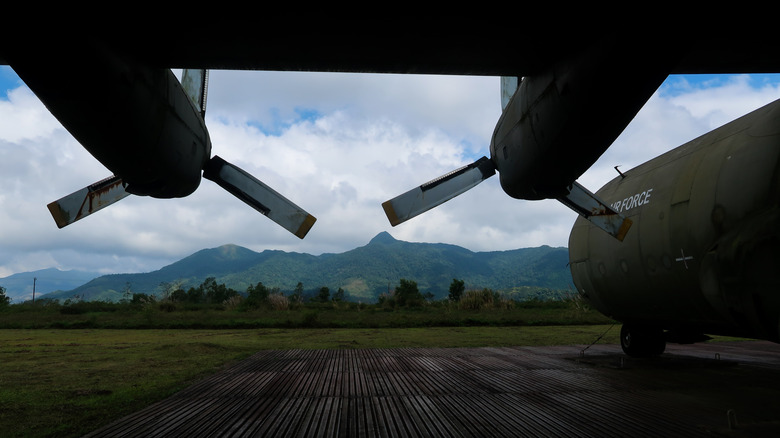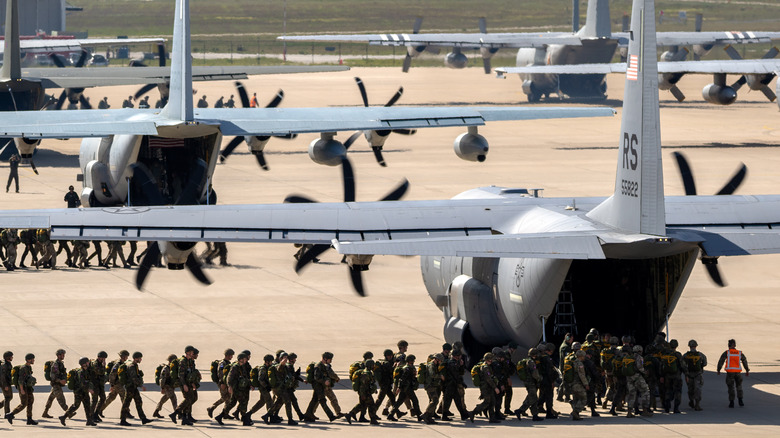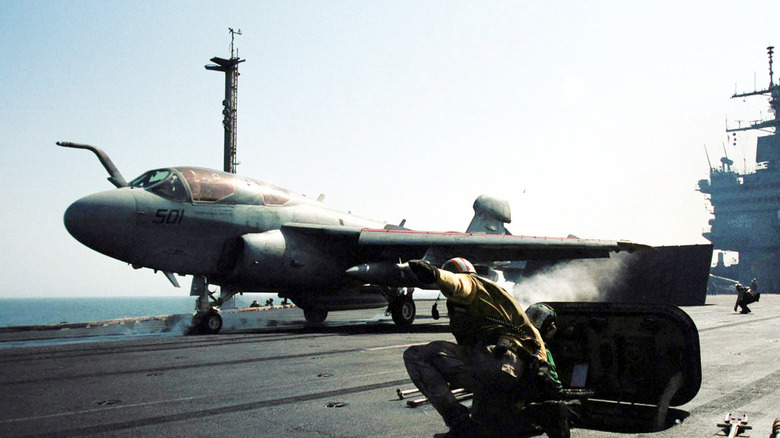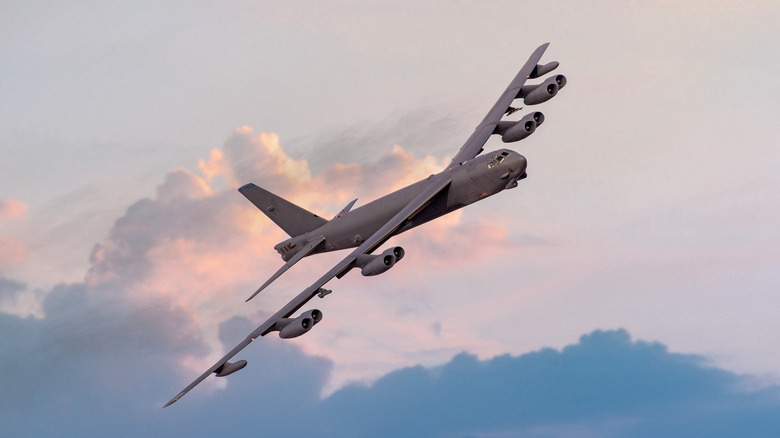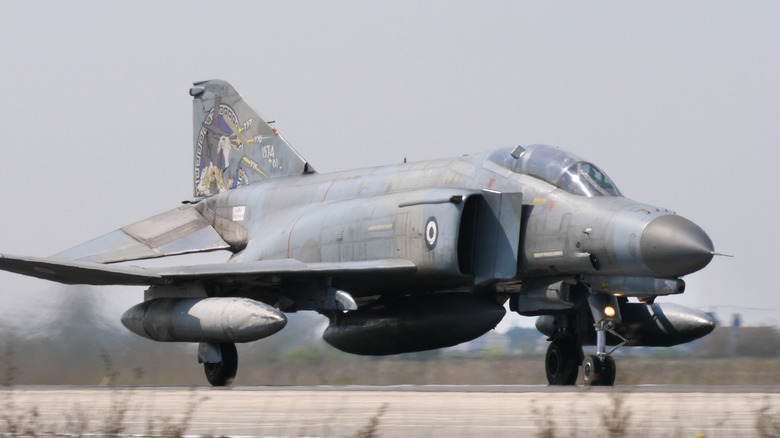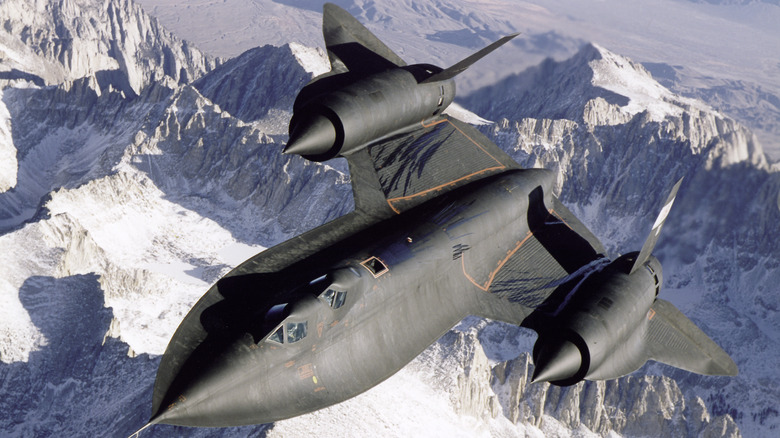5 Of The Most Advanced Planes Used In The Vietnam War
The Vietnam War was a transitional era in American military doctrine, capability, and tool utilization. In major conflicts of old, each side would more or less line up its weaponry and manpower on the battlefield and fire away at one another. From the American Revolution and Civil War, through to the grinding trench combat that took place during the World Wars, direct combat was always the primary feature of warfare.
Likewise, whether it be the Ironclad battleships of the 1860s or the Sherman Tank of the 1940s, highly technical wartime solutions were required to provide the basis for victory. In Vietnam, The U.S. military faced off against a largely guerilla enemy that turned this paradigm on its head.
Fortunately, designers had been working on new technology that could turn the tide of war in this new reality of conflict. The OV-10 Bronco, for instance, was a low-budget yet high-impact STOL aircraft that — while designed in the early 1960s — turned out to fit perfectly into the American strategy for reconnaissance and light attack.
Another important aerial attacker was the Douglas A-4 Skyhawk, the aircraft that served in a forward combat role at the outset of the war, and the fighter that late Senator John McCain was shot down in while serving in Vietnam. These were both fantastic aircraft that brought highly advanced functionality to this very different battlefield.
Yet, they both pale in comparison to some of the most innovative and technically proficient airplanes that served Americans during this time.
Lockheed C-130 Hercules
The C-130 Hercules might not immediately stand out as a technically impressive aerial specimen. It doesn't bring the same athletic power as a fighter jet might, yet it remains one of the most important assets in the U.S. armed forces to this day. The C-130 is a transport vessel that's capable of performing airdrops, specialized equipment airlift, and facilitates the movement of thousands of service members around the world.
Today, the Air Force still operates 145 C-130s as part of its combat readiness fleet. The interior compartment can be configured to support seating for passengers, airdrop platforms for cargo, or even heavy machinery and vehicles. The first C-130s were delivered to the Air Force in December of 1956, and the C-130E (first entering service in 1962) provided a maximum allowable payload of 42,000 pounds.
The C-130 made it possible to quickly and effectively move combat troops and supplies across the world, something that would be immediately necessary in the far-flung battlefield in Southeast Asia. Once there, the aircraft could also support airdrop requirements, paratrooper and special forces aerial insertions, and other specialized requirements. The vessel remains a hallmark of logistical success, showcasing military technology and performance.
Grumman EA-6B Prowler
The EA-6B Prowler was a longstanding electronic warfare platform that helped American bombers, fighter jets, and even naval and ground forces retain a significant edge over the enemy. Its duties began to shift to the EA-18G Growler when the newer aircraft first entered service in 2006, but the Prowler wasn't retired until 2019 — spending almost 50 years in service.
The Prowler conducted defense suppression missions, and first served in an aerial role over Vietnam. The jet was predominantly carrier-based, and therefore served Navy fliers. It flew with electronic countermeasures as well as an ALQ-99 onboard receiver, an ALQ-99 jamming pod system, a USQ-113 communications jamming system, and HARM radiation missiles that explode over and destroy grounded radar infrastructure.
During more recent conflicts, availability of support from EA-6B Prowlers has been the key green-light indicator on mission viability. More recently, it has flown missions to intercept communications and jam radio detonation signals for IEDs in Iraq and Afghanistan.
Boeing B-52 Stratofortress
The B-52 Stratofortress brought a massively advanced update to the earlier B-29 model, which carried out essential bombing missions during World War 2 (including the nuclear ordnance drops over Hiroshima and Nagasaki). The modern B-52 remains an integral feature of American fighting capability, with around 40% of all ordnance dropped by coalition forces during Operation Desert Storm coming from the Stratofortress platform.
The aircraft can perform reconnaissance missions and nuclear strike capabilities, alongside a range that's only limited by the physical performance capabilities of its aircrew. Without in-air refueling, the B-52 offers a combat range of more than 8,800 miles, and refueling can improve upon this range significantly.
The aircraft can carry around 70,000 pounds of ordnance, varying from bombs, to mines, to missiles, depending on the mission specifics. It's flown by a crew of five, and has remained a heavily combat-oriented aircraft in the nearly 80 years since it first entered service in 1955. In 1996, two B-52Hs were launched from Barksdale Air Force Base in Louisiana to strike targets in Baghdad, completing the longest combat mission distance at the time; 34 hours and 16,000 statute miles.
In Vietnam, B-52s were integral in the bombing missions launched by American forces. The aircraft was used to destroy targets across Vietnam, as well as in Cambodia and Laos. The B-52 played a central role in Operation Linebacker II in 1972, which ultimately spurred on peace talks with North Vietnamese forces.
McDonnell Douglas F-4 Phantom II
Replacing the A-4 Skyhawk and A-7 Corsair II, the McDonnell Douglas F-4 Phantom II quickly became a menacing sight in the skies over Vietnam. The opposing North Vietnamese forces were outfitted with MiG fighters (with the MiG-21 becoming the most prominent and dangerous of the bunch), requiring an agile and potent dogfighter to match.
The Phantom II quickly rose into this role. It's top speed reached up above Mach 2, making it the fastest, longest range, and highest-altitude jet in the Navy's arsenal. By 1985, when production of the Phantoms was halted, McDonnell had built almost 5,100 examples of the fighter.
The jet served in forward combat roles for the U.S. Air Force, Navy, and Marine Corps during the Vietnam War, and many models were built for allied nations during its production as well. The F-4C would typically carry four AIM-7E and four AIM9B air-to-air missiles, alongside eight bombs (750-pound Mk 117), two external fuel tanks, and an ALQ-87 electronic countermeasures pod.
In total, the fighter could carry 16,000 pounds of ordnance and sported a range of 1,750 miles, alongside an altitude ceiling of 59,600 feet.
Lockheed SR-71 Blackbird
The SR-71 Blackbird, built by Lockheed, offers a natural conclusion to any discussion of technically advanced aerial tools. It's one of the most impressive aircraft to ever take flight, not just during the Vietnam War era. The Blackbird is a reconnaissance aircraft, providing critical intelligence to decision makers on the ground, but it accomplishes this without placing its technology or crew into direct harm.
After the U-2 downing in 1960, American brass quickly went searching for a new intelligence gathering aircraft that could fly even higher and faster, and was less visible to radar detection methods. The result was the Blackbird, a reconnaissance vessel that delivered on the brief: "An aircraft that can't be shot down."
The vessel was built of titanium, and the outer shell — caked in radar-absorbing black paint — combined to create an iconic profile that has remained in the public consciousness ever since. In direct action, the SR-71 was deployed to capture images over the Son Tay prison camp in 1970. Later, Blackbird teams were used to create sonic booms over Hanoi to alert American POWs below of a rescue attempt.
The Blackbird flew constantly over Vietnam and elsewhere during the war, and none were ever lost, in contrast to many other reconnaissance vessels that didn't fare as well. The plane set a straight-course speed record after the war, flying at 2,194 miles per hour.
